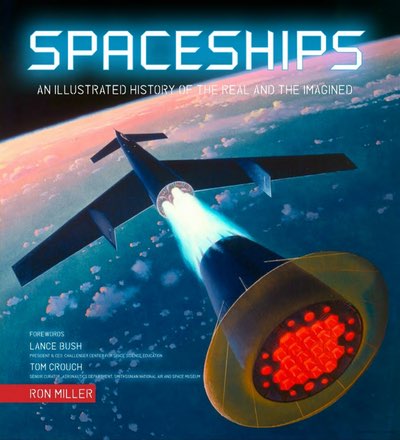Review: Spaceshipsby Jeff Foust
|
| While the book is lavishly illustrated, it falls short in both some of its discussions about real spaceflight, and could have done more to tie the two worlds together. |
This large format book is full of illustrations and images as the chapters progress from the centuries of fictional accounts of space travel prior to the beginning of the Space Age, through the early era of rocketry, and on to the present day and plans for the future. Miller frequently goes back and forth between real and fictional vehicles, filling the pages with lots of images and a little explanatory text. One welcome bonus is the addition of original illustrations recreating some of the early vehicles, both from reality and fantasy, for which there is little or no imagery,
Sometimes, though, those discussions of reality start to look like fantasy. In a chapter on future spaceflight, Miller includes an illustration of the Ares 1 rocket, saying that it will start launching six-person crews despite “changing political priorities.” Of course, Ares 1 was cancelled as part of the broader elimination of the Constellation program in 2010 and will never fly. That chapter also claims NASA “hopes to return humans to the Moon in 2018,” something that is certainly not in NASA’s plans today and was unlikely even during much of the Constellation program. An illustration of an early mockup of SpaceX’s Dragon spacecraft states that SpaceX entered the Dragon into the X PRIZE Cup in 2007; while the mockup may have been exhibited at the event, SpaceX was never a contesting in the long-ago-cancelled suborbital spaceflight competition. (It also claims that Dragon is the only private spacecraft to have traveled to the ISS; Orbital ATK’s Cygnus, of course, has also done so.)
There’s also a missed opportunity in this book. Spaceships frequently contrasts imagined spaceships with real ones. But there’s little discussion about whether there’s any connection between the two: how closely were engineers designing a generation of spacecraft inspired by the designs of previous generations? Are any similarities due to designers recalling those fictional craft, or independent solutions to similar problems, or just coincidence? While the book offers a rich visual history, there’s more to be examined about the connections between reality and fantasy.
